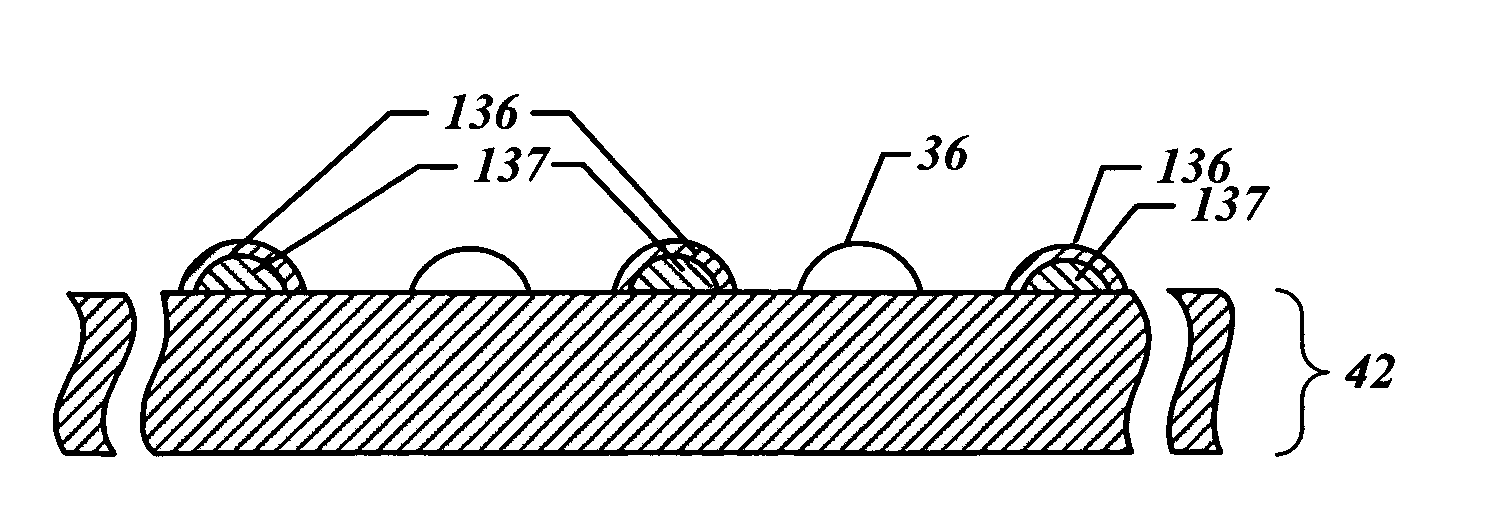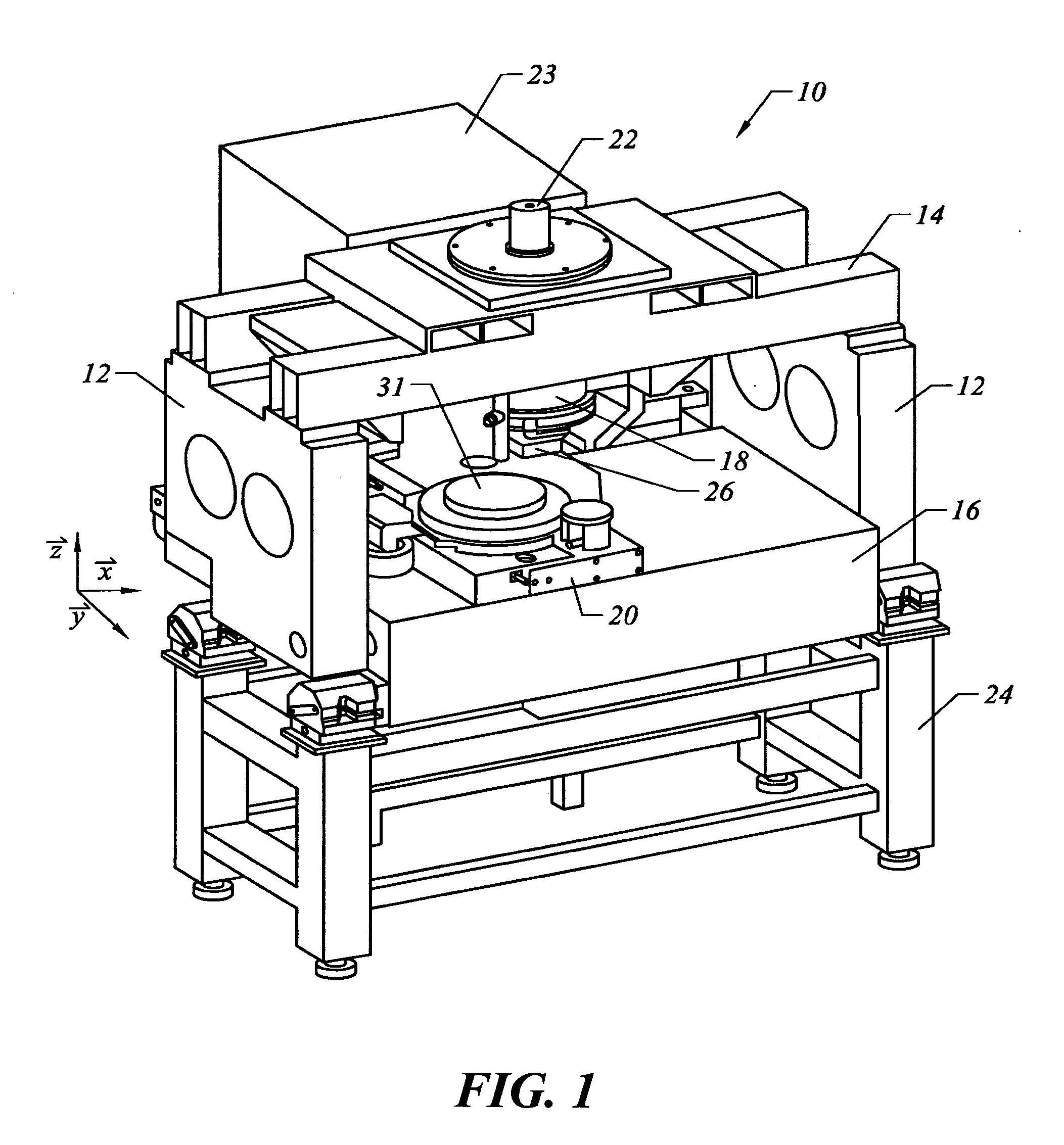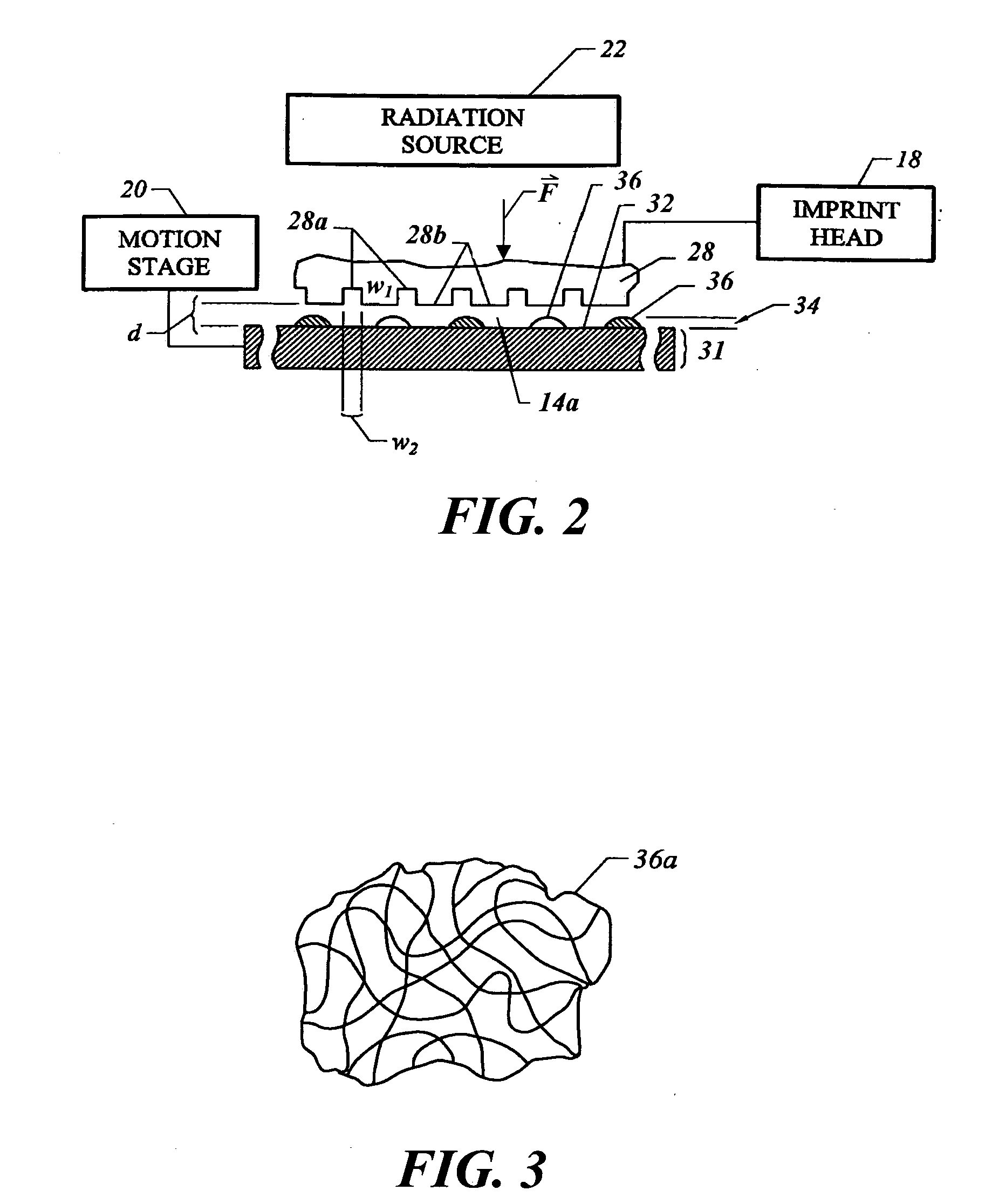Materials and methods for imprint lithography
a technology of imprint lithography and materials, applied in the field of imprint lithography, can solve the problems of reducing throughput, reducing the efficiency of imprinting, and limiting the operation life of prior release layers, so as to reduce, if not prevent, the formation of voids during imprinting, and efficiently wet the imprint material.
- Summary
- Abstract
- Description
- Claims
- Application Information
AI Technical Summary
Benefits of technology
Problems solved by technology
Method used
Image
Examples
Embodiment Construction
[0017]FIG. 1 shows lithographic system 10 that may be used to carry out imprint lithography in accordance with one or more embodiments of the present invention and utilizing imprinting materials fabricated in accordance with one or more embodiments of the present invention. As shown in FIG. 1, system 10 includes a pair of spaced-apart bridge supports 12 having bridge 14 and stage support 16 extending therebetween. As further shown in FIG. 1, bridge 14 and stage support 16 are spaced-apart. Imprint head 18 is coupled to bridge 14, and extends from bridge 14 toward stage support 16. Motion stage 20 is disposed upon stage support 16 to face imprint head, and motion stage 20 is configured to move with respect to stage support 16 along X- and Y-axes. Radiation source 22 is coupled to system 10 to impinge actinic radiation upon motion stage 20. As further shown in FIG. 1, radiation source 22 is coupled to bridge 14, and includes power generator 23 connected to radiation source 22.
[0018] ...
PUM
| Property | Measurement | Unit |
|---|---|---|
| thickness | aaaaa | aaaaa |
| thickness | aaaaa | aaaaa |
| thicknesses | aaaaa | aaaaa |
Abstract
Description
Claims
Application Information
 Login to View More
Login to View More - R&D
- Intellectual Property
- Life Sciences
- Materials
- Tech Scout
- Unparalleled Data Quality
- Higher Quality Content
- 60% Fewer Hallucinations
Browse by: Latest US Patents, China's latest patents, Technical Efficacy Thesaurus, Application Domain, Technology Topic, Popular Technical Reports.
© 2025 PatSnap. All rights reserved.Legal|Privacy policy|Modern Slavery Act Transparency Statement|Sitemap|About US| Contact US: help@patsnap.com



